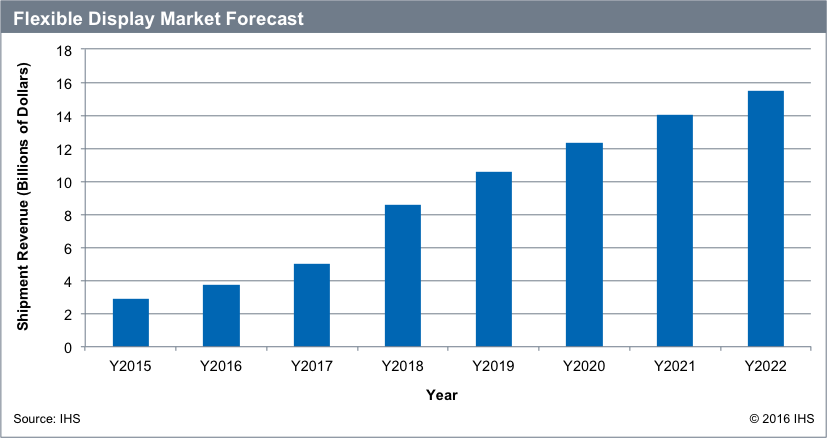Revenue from flexible displays is expected to increase more than 300 percent from $3.7 billion in 2016 to $15.5 billion in 2022, according to the new IHS “Flexible Display Market Tracker” report. The research firm also foresees that flexible displays will make up 13 percent of total display market revenue in 2020.
Samsung Electronics and LG Electronics launched the first smartphones with flexible active-matrix organic light-emitting diode (AMOLED) displays in 2013, and both companies continue to adapt flexible AMOLED displays for their smartphones, smartwatches and fitness trackers.
“The varieties of flexible displays include screens that are bendable, curved and edge-curved, but fully foldable form factors are expected within the next two years,” Jerry Kang, principal analyst of display research at IHS, observes. “Only a few suppliers — including Samsung Display, LG Display, E-ink and Futaba — are now regularly supplying flexible displays to the market. However, many more panel makers are now attempting to build flexible display capacity, leveraging the latest AMOLED display technology.”
Flexible displays are mostly used in smartphones and smartwatches right now, but IHS is forecasting other applications like tablet PCs, near-eye virtual reality devices, automotive monitors and OLED TVs by 2022.
“Consumer device manufacturers will eventually need to innovate their conventionally designed flat, rectangular form factors to make way for the latest curved, foldable and rollable screens,” Kang says.





